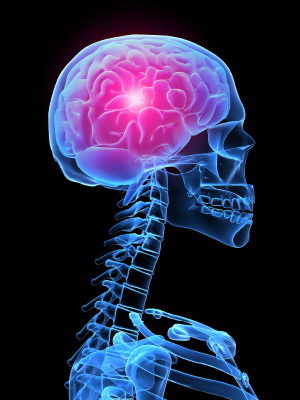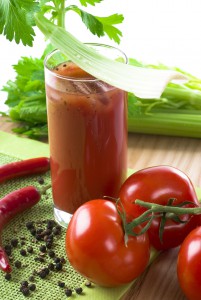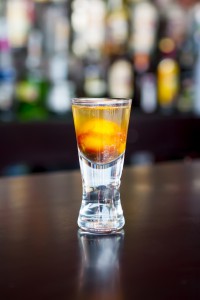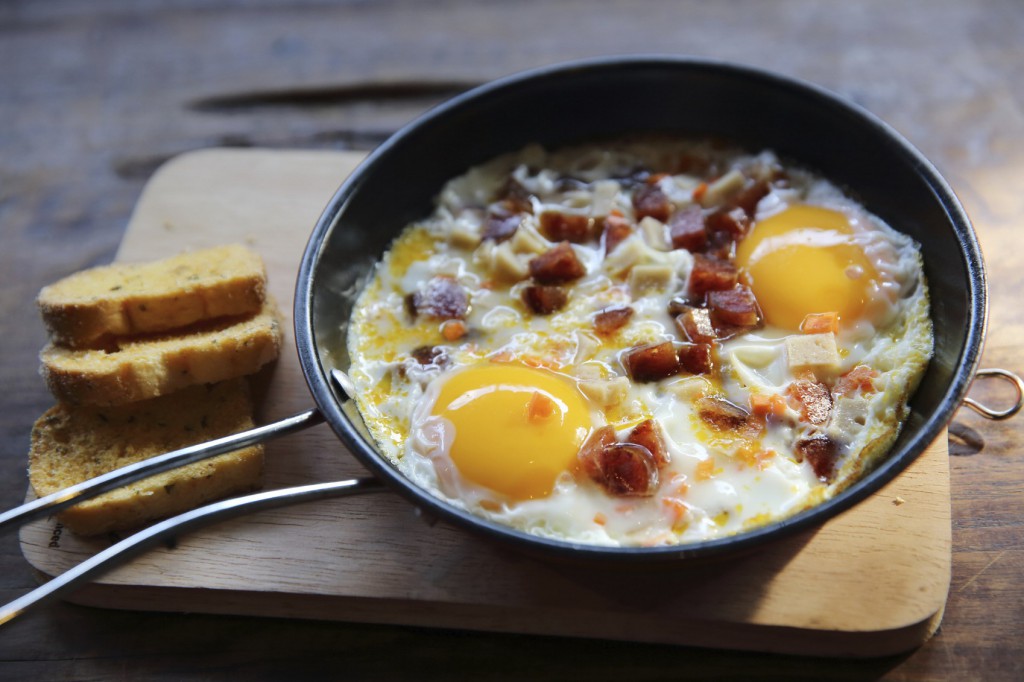Do your eyelids creak when they open? Has your tongue been scrubbed with sandpaper?
Is the Little Drummer Boy playing on your cerebral cortex? At this time of year, we make merry in haste and then repent in waste, the next day.
Thousands of years ago, man discovered alcohol; the next day he discovered the hangover. Since then, we’ve learned a lot about what causes hangovers but not what cures them. Their effects are as immutable as Newton’s law: for every action there is an equal and opposite reaction.
Of course, the only way to avoid a hangover is not to drink too much in the first place. But hindsight is 20/20, or perhaps in your case right now, 5/20. When we mock moderation, alcohol passes from the stomach into the small intestine.
Some of it is absorbed there but most of it heads on to the liver. But the liver can only metabolize one drink an hour—allowing the rest of the alcohol to speed through our system, hitting other organs.
While the liver is in overdrive, it’s not metabolizing glucose very well. That drops our blood sugar, making it hard for us to concentrate. This prods the pancreas to produce a lot more insulin, whi ch makes us shake and sweat.
ch makes us shake and sweat.
The heart pumps harder as well, so our blood pressure rises—probably the reason some drinkers suffer heart attacks the next morning.
The kidneys react to the diuretic properties of alcohol and release more urine than usual, which not only dehydrates us, but also depletes the blood’s electrolytes: sodium, potassium, calcium and magnesium.
But contrary to popular belief, the brain doesn’t dehydrate, it actually swells as the alcohol floods the frontal lobe and pushes it against the skull. The brain itself has no pain receptors but the membrane over it does. (The damage to nerve cells is temporary for all but heavy drinkers—even though you may not remember that versatile lampshade.)
One of literature’s best descriptions of this wretched state is in the British writer Kingsley Amis’s novel Lucky Jim:
“Dixon was alive again. Consciousness was upon him before he could get out of the way; not for him the slow, gracious wandering from the halls of sleep, but a summary, forcible ejection. He lay sprawled, too wicked to move, spewed up like a broken spider-crab on the tarry shingle of the morning. The light did him harm, but not as much as looking at things did; he resolved, having done it once, never to move his eyeballs again. A dusty thudding in his head made the scene before him beat like a pulse. His mouth had been used as a latrine by some small creature of the night, and then as its mausoleum. During the night, too, he’d somehow been on a cross-country run and then been expertly beaten up by secret police. He felt bad.”
Thankfully, most of us never feel that bad. In fact, sometimes what we think of as a hangover may in fact be an allergic reaction to wine. Wine contains some 800 components, including substances such as sulfites that protect it against unwanted bacteria and oxidation.
Sulfur dioxide is a natural byproduct of fermentation and is present even in wines to which no sulfites have been added, including organic wines.
Sweet wines have the most sulfites added to stop yeast from reacting with the residual sugar for a secondary fermentation in the bottle. And white wines have more sulfites than red wines, which have tannin as a preservative.
Sulfites have got an unfair rap since the government requires warnings on wine labels about them and not the other 799 compounds. Yet they cause reactions in only about 1% of the general population and 5% of asthmatics—the percentage of severe reactions is even smaller.
Most people consume some 160 milligrams of them daily, in foods like beer, shrimp, dried fruits and salad bars. A glass of orange juice has more sulfites than a bottle of wine, which contains less than one milligram.
Another compound in wine that people react to is tannin that comes from flavonoids in grape skins, particularly in red wines, and sometimes from oak barrels. Tannin mostly just makes your mouth feel furry, but for some people, it reacts with the neurotransmitter serotonin and cause headaches, especially in premenstrual women and people who suffer from migraines.
 If you react to tea, soy or chocolate, which contain tannins, you may be allergic. If that’s the case, stick with white wines, which have only 4% of the tannins of red wine.
If you react to tea, soy or chocolate, which contain tannins, you may be allergic. If that’s the case, stick with white wines, which have only 4% of the tannins of red wine.
A third culprit may be histamines, which again are much more present in red wines than white—between 20% and 200% more, especially ripe, low-acid red wines from hot regions. Histamines dilate the blood vessels, causing headaches.
They’re also present in smoked meats, citrus fruits, sauerkraut, chocolate, pickled herring, sausages, aged cheese and other fermented foods. But again, only a small percentage of people are affected.
None of these compounds cause or worsen a hangover. The active culprits are molecules called congeners which add flavour and colour to alcohol. They’re up to 30 times more prevalent in dark drinks (red wine, rum, cognac, whisky, brandy) than clear spirits (gin, vodka, white rum).
As the German proverb says: Brandy is lead in the morning, silver at noon, gold at night. And there are more congeners in cheap spirits which go through fewer distillations and cheap wines which have more impurities. (No wonder Dorothy Parker called her favourite cheap whisky a White Hearse.)
Some people are more sensitive to the congeners in one dark liquor than in those of another so the key is to experiment. And fortunately, our bodies can fight off congeners better than flu viruses, so hangovers don’t last five days.
Something else to remember when you’re chugging the Remy Martin VSOP over the holidays: when your body metabolizes alcohol, there are some particularly nasty by-products. Think of formaldehyde, which we use to preserve organs and embalm bodies; acetone, used in nail-polish remover; and formic acid, the sting venom found in ants.
Queasy, like Sunday Morning
When it comes to holding their liquor, people’s capacity varies greatly. The quantity of stomach enzymes that break alcohol down differs genetically: women get drunk more quickly than men because they have more fat, less muscle and fewer enzymes.
The good news for older drinkers, though, is that after menopause woman almost catch up with men. Our brains shrink a little with age as well, so we become less prone to headaches.
And physically fit people cope better with hangovers because their circulation is better. For the same reason, dancing while you drink helps to metabolize alcohol, but exercise the next day doesn’t do much good.
Some scientists believe that happy drinkers experience a less severe hangover than grim ones. Regular drinkers metabolize alcohol more quickly up to a point: heavy drinkers with damaged livers take longer.
It’s a myth that mixing your drinks makes a hangover worse. Switching drinks may tempt you to drink more because the taste is new each time, especially sweet cocktails that mask the taste of alcohol, such as piña coladas and strawberry daiquiris.
Sparkling wine carries alcohol into the blood stream more quickly, but it doesn’t really matter what the source of alcohol is—it’s the net alcohol by volume that counts. And there’s a significant difference between a wine with 8%, such as cool-climate riesling and 15%, such as hot-climate shiraz.
Other common advice includes eating before and during drinking to slow the absorption of alcohol into your bloodstream. And drinking a glass of water between each alcoholic drink helps too.
It won’t dilute your buzz—in fact, it will prolong it, as well as diminishing the effects of dehydration the next day. Avoid carbonated water, though. Like champagne, it carries the alcohol into the blood more quickly.
Vile Bodies
Some puritans believe that we shouldn’t try to avoid hangovers at all—that they’re an act of atonement for a life of excess. (Didn’t Blake say that the roa d to excess leads to the palace of wisdom?)
d to excess leads to the palace of wisdom?)
But for those who haven’t treated their bodies like a temple, the search for a cure has led to some concoctions that seem to inflict even more suffering on the hung-over.
The “hair of the dog” remedy, drinking a bit more alcohol the next morning to lessen the effects of withdrawal, is popular the world over. One of the most popular is the Bloody Mary, made of vodka, tomato juice, Worcestershire sauce, Tabasco sauce, salt, celery salt, black pepper, sugar, lemon or lime.
Its benefit is probably that tomato juice contains vitamin C and restorative flavonols and trace elements. The Corpse Reviver, created in 1934 by legendary bartender Harry Craddock at London’s Savoy Hotel contained lemon juice, Lillet blanc, Cointreau, gin and a drop of absinthe.
Craddock said it could bring anyone back from the dead, though four in swift succession would “unrevive the corpse again.” Still such cocktails are really just a delaying tactic: while a small amount of alcohol may make you feel better temporarily, it’s better to get your detox over with.
In France, the traditional folk remedy is the vile-smelling Schoum, which was once used to treat scurvy: peppered mint oil, amyl acetate and extract of fumitory. The Japanese took Hapalyse, made from cattle liver and vitamins B15, B2 and E.
Mongolians drank a glass of tomato juice with a pickled sheep’s eye in it. In Puerto Rico, they rubbed half a lemon under the drinking arm. And the Russians atoned for their sins by beating themselves with a small tree branch in the public steam room. Those feeling less remorseful simply kept right on drinking.
Despite the dub ious merit of these approaches, they were wildly creative. In sixteenth-century England, they ate raw eels and almonds ground to a paste. In Morocco, they inhaled the smoke of burning fossils.
ious merit of these approaches, they were wildly creative. In sixteenth-century England, they ate raw eels and almonds ground to a paste. In Morocco, they inhaled the smoke of burning fossils.
Ancient Roman writer Pliny the Elder ignored the popular choice of eating fried canaries and recommended raw owl eggs instead. In fact, egg-based remedies are common, including the well-known Prairie Oyster: pepper, raw egg yolks, tomato juice, angostura bitters and Worcestershire sauce. This was the concoction that Jeeves the butler served to Bertie Wooster in P.G. Wodehouse’s novels.
On the one hand, eggs are a good source of cysteine, which helps the body make glutathione, the antioxidant that’s diminished by alcohol. (The amino acid supplement N-acetyl-cysteine (NAC) supposedly also helps to boost cysteine.)
But on the other hand, eating raw eggs isn’t recommended because of the risk of salmonella poisoning. Worcestershire sauce seems a cruel thing to inflict on an irritated stomach, and unless you have a butler, following a complex recipe may be a challenge.
Cooked eggs are more acceptable (and palatable), as in the traditional English breakfast of fried eggs, sausage and tomato. A protein-rich meal contains amino acids that produce endorphins and help to steady blood sugar.
Other experts say that such a fatty breakfast is hard to digest and grease can irritate the stomach. They recommend non-acidic fruit and vegetables, such as bananas and broccoli, which contain potassium and vitamin B. Apart from anything else, fruit replenishes your blood sugar.
In fact, most food helps to replace lost nutrients and speeds up metabolism. You may not feel like eating, but starving yourself can make matters worse, especially if your stomach is irritated. Yogurt and milk can help soothe the gut; in fact, some people drink a pre-emptive glass of milk before they start boozing.
There’s Got to be a Morning After
After the binge as during it, water helps to flush the toxins from the kidneys and liver and to replenish those dehydrated tissues. Coke and coffee are iffy: the caffeine constricts blood vessels in the head which helps headaches, but it also acts as a diuretic and can worsen dehydration.
Electrolyte drinks, such as Gatorade, and over-the-counter diarrhea drugs, such as Dioralyte, apparently help to restore blood sugar, salt and fluid. Ginger apparently has some anti-nausea properties. Miso soup replenishes your salts.
When it comes to popping pills, there are a number of choices, but as with all of these so-called remedies, it’s best to chat with your doctor first.
Antacids such as Tums and Mylanta can help an irritated stomach. (But Alka-Seltzer, with its sodium bicarbonate, can alter blood pH, which can be dangerous for people with hypertension or heart disease.)
Conversely, Aspirin, Motrin and Advil (ibuprofen) alleviate headaches, as they’re both an anti-inflammatory and an analgesic (pain reliever), but they may irritate the stomach, even causing bleeding with alcohol.
Tylenol is best avoided: its active ingredient is acetaminophen which can cause liver damage when combined with alcohol. Others take an antihistamine such as Claritin, but there can be harmful reactions to mixing these drugs with alcohol.
 Others simply take vitamin B or C pills. If you’re into herbal remedies, many swear by milk thistle, which supposedly promotes liver function. And if you know a good reflexologist, get a big toe massage to reduce a headache. (Don’t try this yourself; bending over could make things worse.)
Others simply take vitamin B or C pills. If you’re into herbal remedies, many swear by milk thistle, which supposedly promotes liver function. And if you know a good reflexologist, get a big toe massage to reduce a headache. (Don’t try this yourself; bending over could make things worse.)
But in the future, we may not even have to worry about cures: scientists are experimenting not just with hangover pills, but also with genetically modified vines that will produce wine that doesn’t cause hangovers.
My own approach to a hangover is to first seek sympathy, then walk away in a huff after I’m told to stop being a drama queen. Then I take an Advil, put on a frozen gel eye-mask and don an immensely ugly but comfortable flannel nightgown. After napping for three hours in a dark room, I call my mother and ask her why she still loves me.
A little nineteenth-century poetry helps too: it reminds me that this cruel fate has been around for a while and that people do survive it. As Lord Byron said, “Let us have wine and women, mirth and laughter. Sermons and soda-water the day after.”










